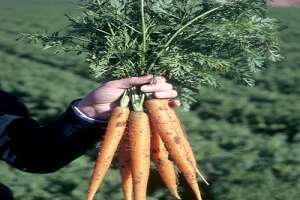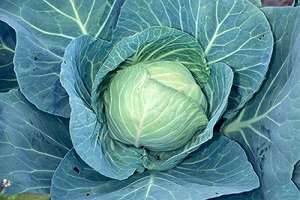By Gretchen Voyle

As fall begins, many smart gardeners are finishing up their garden harvest of vegetables and fruits. There are many vegetables and fruit that must be picked and dealt with almost immediately or they will lose quality, such as tomatoes, which must be eaten or processed. September begins the watch for that first frost. Warm season vegetables will not survive even a light frost because they get partially or totally frozen and decay begins almost immediately. Some of the garden goodies, however, are either not affected or enhanced by light frosts. Michigan State Extension offers the following suggestions on how to get more mileage out of your garden’s root crops and greens.
Root crops
Crops below the surface of the soil are not affected by frosts, but they are affected by freezing. As long as the soil is damp, they do well where they grow. If the soil is wet, they could rot. Root crops like carrots, turnips, beets, rutabagas and parsnips can remain in the garden after a frost and still be removed in good condition later, but get them dug and stored before the ground freezes.
Potatoes can also stay in the soil, but it is important they be dug and removed from the garden almost immediately and not left on the soil surface for any period of time. If potatoes remain on the soil surface in the sun, they start turning green. This is more than an annoying color; it is a chemical called solanine. It makes the potato bitter and, if enough is ingested, poisonous. It takes very little of this glycoalkaloid poison to cause gastrointestinal and neurological disorders. So dig and remove the potatoes to a dry, warm area out of the sun to begin the process of letting the skin toughen up for storage. Dry in a single layer and turn periodically. This takes about two weeks. Carefully remove soil, but do not wash the potatoes. You want less moisture, not more. The toughening of the skin is what will enable longer winter storage.
Greens
Some greens like kale and collards actually become a bit sweeter with a light frost. Swiss chard can do the same, but if leaves become too tough to enjoy, remove them and enjoy the stems by steaming or lightly sautéing them. The tougher leaves and stems can also be incorporated into soups for a little extra color and texture.

Ball cabbages can withstand light frosts, but if outside leaves get damaged, just peel them away and the remaining healthy leaves are good to go. Consider thinly slicing or chiffonading the leaves. Chiffonade means “little ribbons” in French. Then, sauté the cut leaves for a cooked cabbage treat. This can be done with either green or red ball cabbage. Add some shredded carrots or sweet peppers for a colorful side dish.
Leaf lettuces cannot handle the frosts that kale or collards can. It may be necessary to cover them if extremely cold temperatures are expected. Cover them with several layers of newspaper, a bed sheet or possibly a floating row cover. Avoid plastic because it traps moisture and transmits the cold. If temperatures fall below 32 degrees Fahrenheit, they may be a “plant-cicle” regardless of the protection.
Get the most from your garden. Smart gardeners know the satisfaction of eating and enjoying the products of their summer’s work.
Source: msu.edu